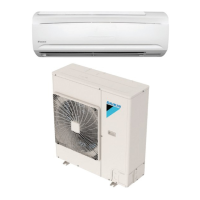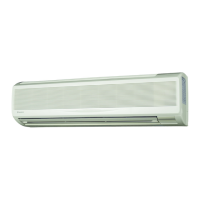13 English
DRAIN PIPING WORK6.
Install the drain piping. (Refer to Fig. 16)(1)
The drain pipe should be short with a downward slope and should prevent air pockets from forming. •
Watch out for the points in the fi gure 16 when performing drain work. •
Fig. 16
Make sure the drain
hose is at a downward
slope.
Make sure the tip does
not go underwater even
when water is added.
Drain hose Drain hose
(Downward
slope)
When extending the drain hose, use a commercially available drain extension hose, and be sure to •
insulate the extended section of the drain hose which is indoors. (Refer to Fig. 17)
Indoor unit drain hose
Extension drain piping
(commercially available)
Insulating tube
(commercially available)
Insulating tape (accessory) (4)
( See “4.INDOOR UNIT INSTALLATION” )
Fig. 17
Make sure the diameter of the extension drain piping is the same as the indoor unit drain hose (hard •
vinyl chloride, I.D. 9/16”) or bigger.
In case of converging multiple drain pipes, install them referring to Fig. 18. •
Select diameter of drain piping which adapts to the capacity of the unit connected. •
Fig. 18
(Slope of at least 1/100)
4 or more
Make sure the drain works properly. (2)
Plastic container
for pouring
Drain pan
Make sure not to splash the water.
Fig. 19
After drain work is complete, perform a drain •
check by opening the front panel, removing
the air fi lter, pouring water into the drain pan,
and making sure water fl ows smoothly out of
the drain hose. (Refer to Fig. 19)
3PN075212AEN.indd133PN075212AEN.indd13 2008/12/2613:41:432008/12/2613:41:43

